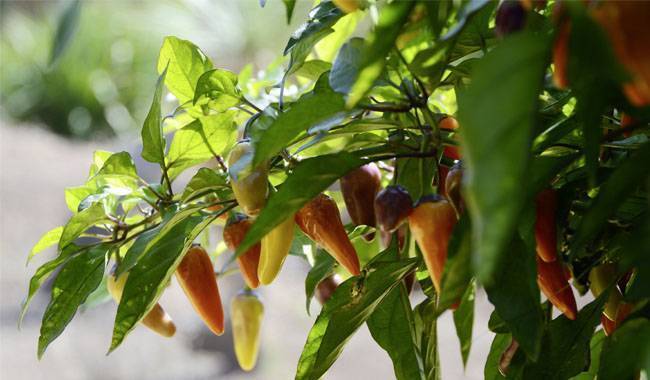
There are many different varieties of chili peppers. But one of the favorites among chili fans is Jalapeño Peppers. It is revered for its unconventional flavor, which does not unfold immediately, but gradually from a peculiar warmth to an intensifying hot kick. However, even though it is often referred to as the most pungent pepper, it falls into the medium pungency category (2,500-10,000 SHU) on the Scoville Scale, which measures the pungency of peppers (Scoville Scale chart below). That’s why it can be added to hot dishes, salads and to make different sauces. So let’s get to know it better!
SCOVILLE SCALE RANKINGS FOR 24 TYPES OF CHILI PEPPERS
The Scoville Scale scale provides a way to compare the world’s hottest peppers to everyday varieties, measuring their spiciness in Scoville Scale heat units.
Pure capsaicin: 16,000,000 SHU
Carolina Reaper: 2,200,000 SHU
Trinidad Moruga Scorpion: 2,009,231 SHU
Trinidad Scorpion Butch T: 1,463,700 SHU
Naga Viper: 1,382,118 SHU
Bhut jolokia (ghost pepper): 1,041,427 SHU
Red Savina habanero: 580,000 SHU
Scotch Bonnet: 350,000 SHU
Jamaican Hot: 350,000 SHU
Habanero: 350,000 SHU
Devil’s Tongue: 300,000 SHU
Bird’s eye chili: 225,000 SHU
Carolina Cayenne: 125,000 SHU
Tabasco: 50,000 SHU
Santaka: 50,000 SHU
Chile de árbol: 30,000 SHU
Serrano: 23,000 SHU
Jalapeño: 10,000 SHU
Chipotle: 8,000 SHU
Guajillo: 8,000 SHU
Anaheim: 2,500 SHU
Poblano: 2,000 SHU
Pepperoncini: 900 SHU
Bell: 0 SHU
JALAPEÑO PEPPERS PLANT DESCRIPTION
Jalapeño Peppers, like other peppers, belong to the Solanaceae family. Capsicum annuum originated in Mexico, so it is not surprising that it is named after the Mexican town of Jalapa (City in Guatemala).
In its native country, Jalapeño Peppers are considered an integral part of the national cuisine – they are a key ingredient in famous condiments such as Salsa, Tabasco, and Mole. It is also used to make Mexican Sangria, a non-alcoholic drink based on citrus and tomatoes. Marinated, smoked, dried, and ground condiments. Baked or fried, filled with minced meat or cheese. Use it to garnish tortilla chips. Simmer jams and make preserves.
Jalapeño Peppers look like most other peppers. It has a sturdy, upright, branched stem. Green oval leaves. Large white flowers. Under optimal favorable conditions, it can reach a height of 40 inches (1 meter). Usually no more than 10-23 inches (50-60 cm).
Jalapeño Peppers fruits grow to 2-4 inches (5-10 cm) long. In commercial production, they are harvested when they are technically ripe and green. When fully grown, they turn red and acquire a sweet flavor. When cultivated, proper care and watering can produce up to 25 or even 35 fruits per season. The plant is a perennial and will produce a new crop the following season if left undisturbed.
CULINARY USES OF JALAPEÑO PEPPERS
Unfortunately, in our markets, other pepper varieties are often sold as Jalapeño Peppers. You can tell them apart by their flavor. Jalapeño Peppers will never have a bitter or pungent taste. Its flavor is unmistakably fruity and has a pleasant “warmth” that gradually becomes “hot.”
But the distinctive flavor is not the only advantage of Jalapeño Peppers. Another distinctive feature of Jalapeño Peppers is that they do not lose their flavor when cooked and often even improve it. This is why it is used not only in its original form but also in the preparation of various sauces, stews, aromatic oils, marinades, and smoking.
Smoked Jalapeño Peppers are made entirely of red peppers and are called “Chipotle” (Chipotle Mexican Grill, Inc., often referred to simply as Chipotle, is a fast-casual restaurant chain with locations in the U.S., U.K., Canada, Germany, and France.) Chipotle has a smoky aroma and flavor, with notes of tobacco and chocolate. It is slightly more pungent than raw pepper.
Dry Red Jalapeño Peppers have a mild aroma reminiscent of bell peppers and a spicier flavor than dried green peppers. It is characterized by a medium spiciness.
Incidentally, the constituent substance capsaicin (alkaloid) gives red Jalapeño Peppers their piquancy, while black Jalapeño Peppers contain piperine. Jalapeño Peppers do not contain capsaicin and have a Scoville Scale index of 0 USC.
Jalapeño Peppers is also used in traditional medicine. It is used to prepare decoctions and tinctures and to make lotions. This is because it improves metabolism, has a preventive effect on the cardiovascular system, lowers blood cholesterol levels, eliminates insomnia, enhances vision, improves skin condition, and strengthens hair.
GROWING JALAPEÑO PEPPERS IN THE GARDEN
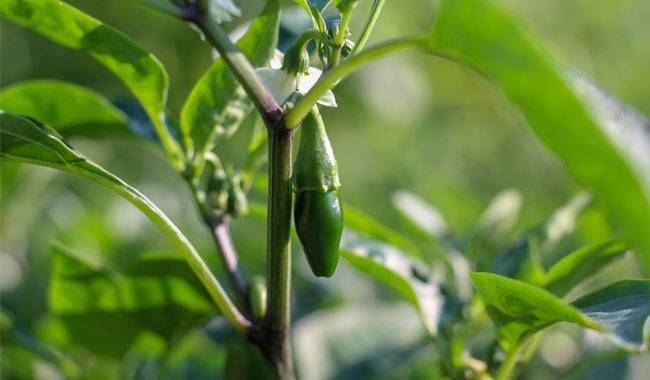
How to grow Jalapeño Peppers
The technique of growing Jalapeño Peppers is no different from that of other bitter peppers. Due to the long vegetation period, it is planted outdoors as seedlings. For this purpose, the seeds are pretreated in a 1% manganese solution and sown in individual cups of 300-500 ml in mid to late February. This is the preferred method because Jalapeño Peppers do not like the root trauma during the harvesting process. The cups are covered with food film, which acts as a greenhouse.
Once the seeds germinate, the foil is removed. If sown in pots, seedlings will be put into individual pots when 2-3 whole leaves emerge. For normal development, provide additional lighting to create 12 hours of daylight. If the plants are weak, fertilize with ammonium nitrate phosphate, etc.
When the temperature stabilizes and the temperature returns to 59 °F (15 °C), the plants are hardened and planted at 15 inches (40 cm) in an open field or greenhouse. At this point, they should already have 8-10 true leaves.
Prepare the seedbed in advance by adding 11-22 lb (5-10 kg) of humus per 11 ft2 (1 m2) or 0.8-1.3 gal (3-5 l) of wood ash per 11 ft2 (1 m2). The optimal conditions for Jalapeño Peppers are good light, moderate temperatures up to 77 °F (25°C), and regular watering with warm water watered liberally to prevent pests and diseases.
Two weeks after transplanting to a permanent location, Jalapeño Peppers can be fertilized before flowering. The first feeding should be with a compound fertilizer composed of nitrogen, phosphorus, and potassium in a ratio of 13:40:13. Jalapeño Peppers are in great need of phosphorus at this stage. The second time is when flower buds appear, using a fertilizer consisting of 15:5:30. During this period, the plant needs more potassium because it improves the growth and ripening of the fruit.
At the time of flowering and fruiting, you can fertilize again with 3:11:38. It is best not to apply too much nitrogen to bitter peppers because they can damage yields by forming a ground cover confidently.
It is important to prune Jalapeño Peppers correctly
To do this, remove the first (crown) flower when it appears on the plant, i.e., when it forms at the first fork. The stems and lower leaves until the first fork is also removed. Form the plant with 2 stems in the greenhouse and 3-4 stems in the open ground. If Jalapeño Peppers are not formed, the harvest will be delayed until later in the season.
GROWING JALAPEÑO PEPPERS ON A WINDOWSILL
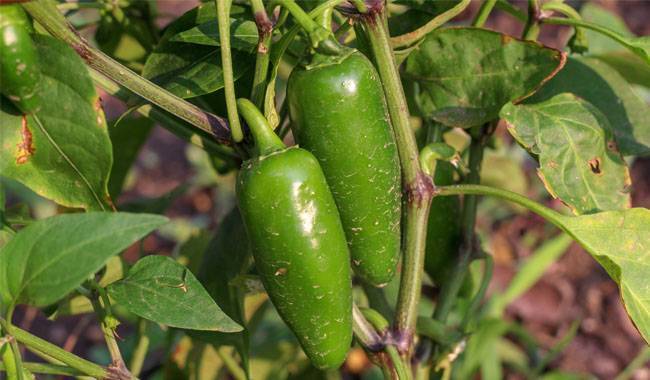
If you can’t grow Jalapeño Peppers in your vegetable garden, you can grow Jalapeño Peppers in pots on your windowsill. Even a 0.8 gal (3 liters) pot will do the job well. However, it is an outdoor plant, so the larger the pot, the higher the yield.
Potted plants should be fertilized at the same time as outdoor plants but at a lower concentration (2x). You should only apply the entire fertilizer with the formula N:P: K 3:11:38 when it is flowering and fruiting.
The best location for potted Jalapeño Peppers is on a sunny windowsill. But in addition to watering and shaping, they need to be carefully checked for pests in these conditions. jalapeño Peppers are often infested with aphids and spider mites. If these problems are not dealt with, the plants become frustrated and die. Therefore, if the first signs appear, it is necessary to apply chemicals and treat Jalapeño Peppers according to the instructions.
How can I tell if Jalapeño Peppers are infested with aphids? First of all, small insects are found at the ends of shoots and young leaves, which have a sticky coating. A spider mite attacks jalapeño Peppers with characteristic small white spots on the surface of the leaves and spider webs on the upper fork of the trunk. Under magnification, the insects themselves can be seen on the spider webs and on the back of the leaves.




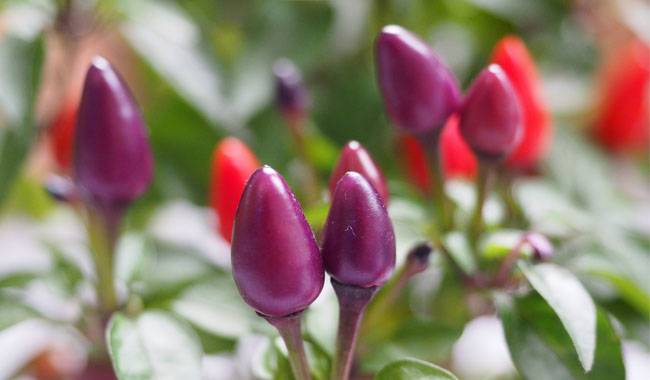
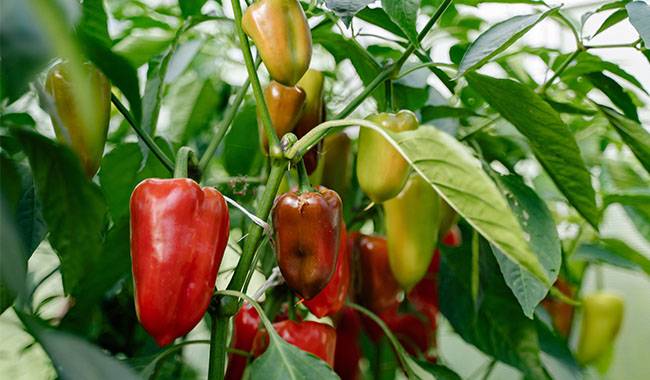
Hi, after reading this remarkable piece of writing i am as well happy to share my knowledge
here with friends.